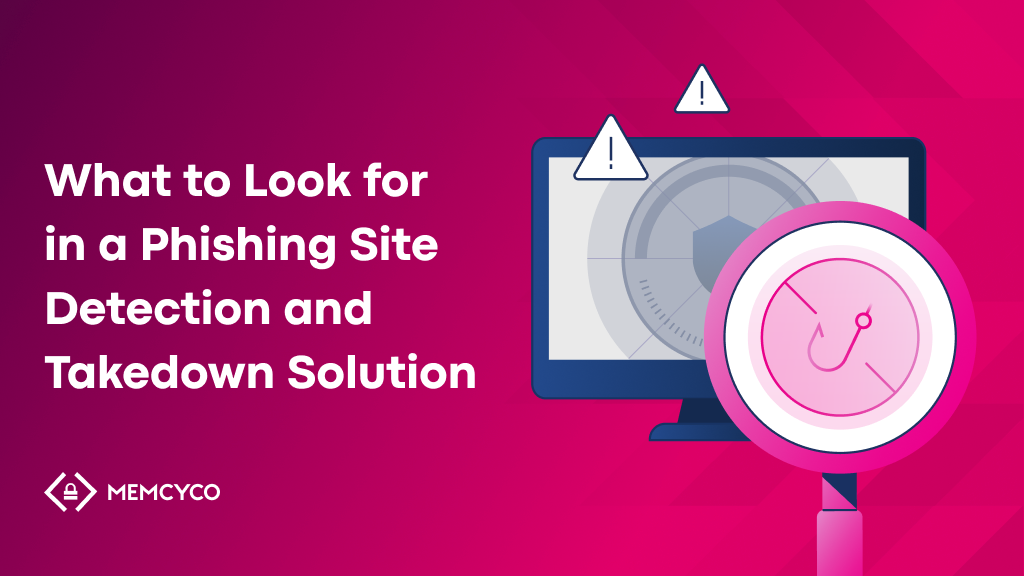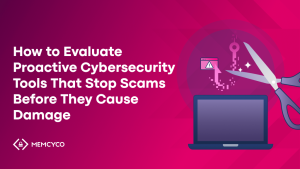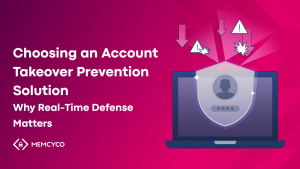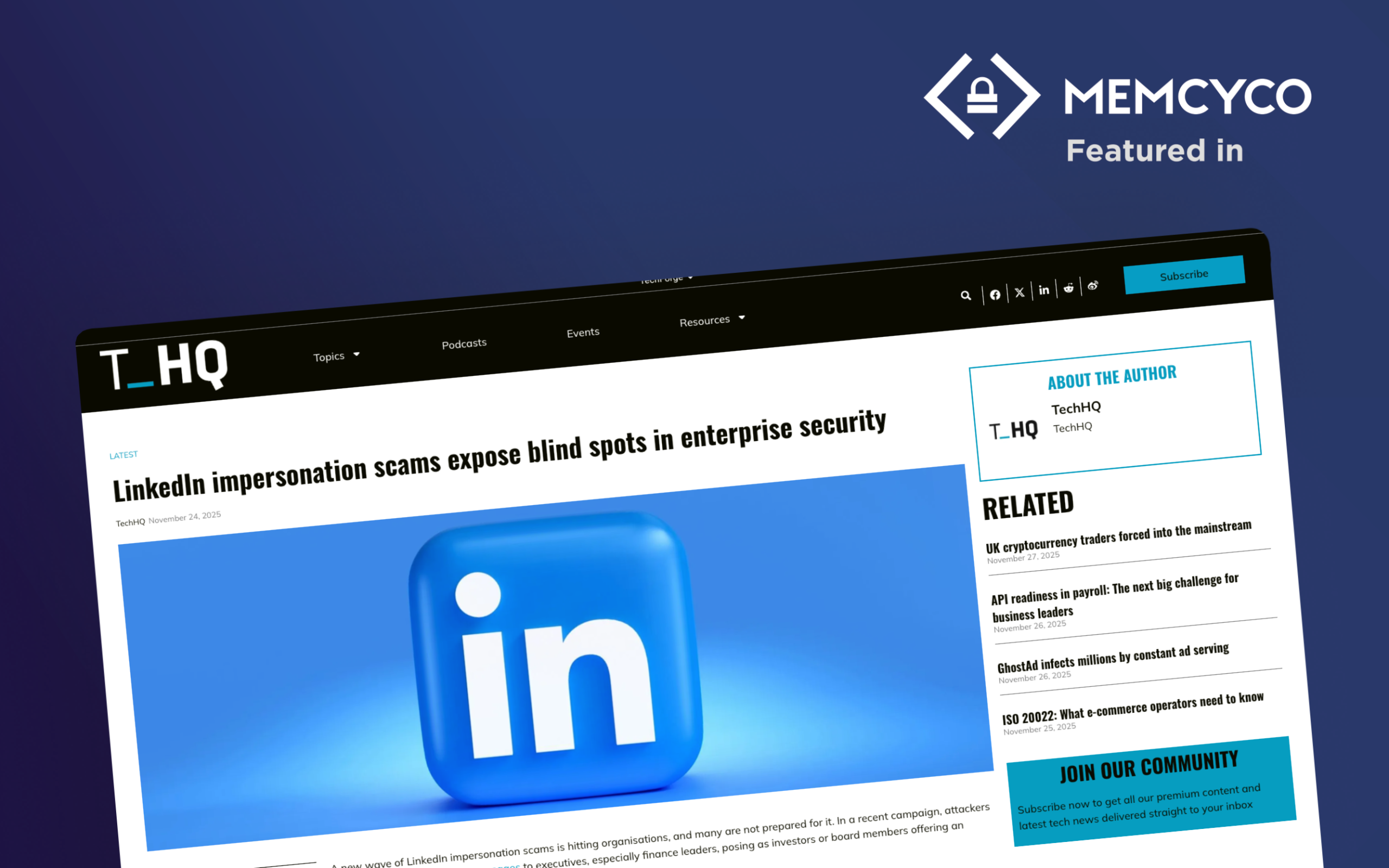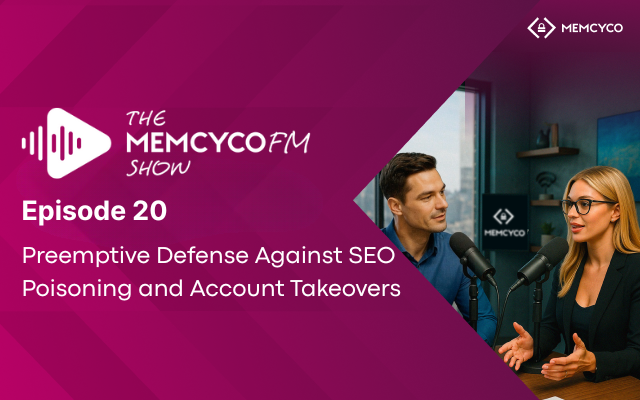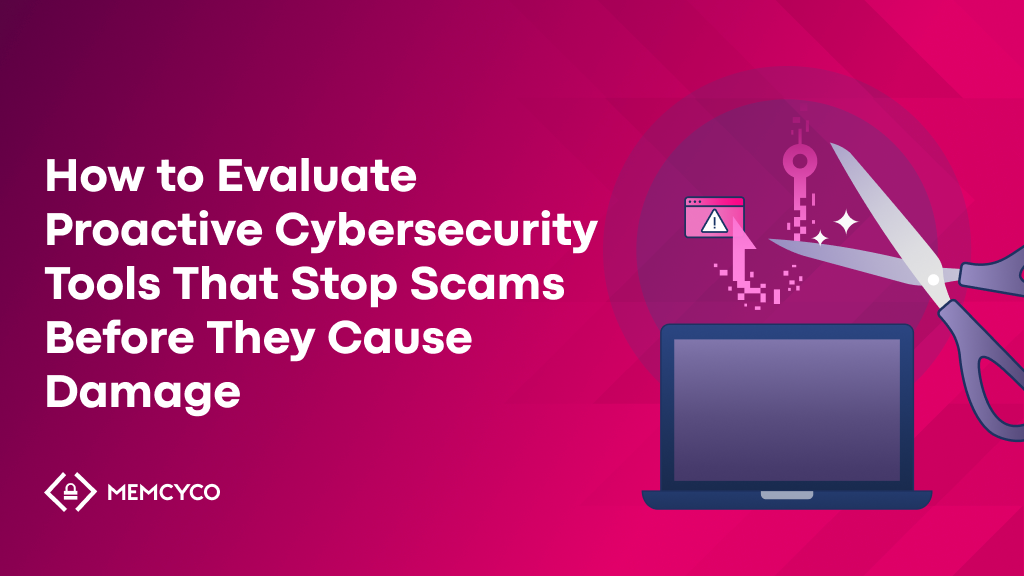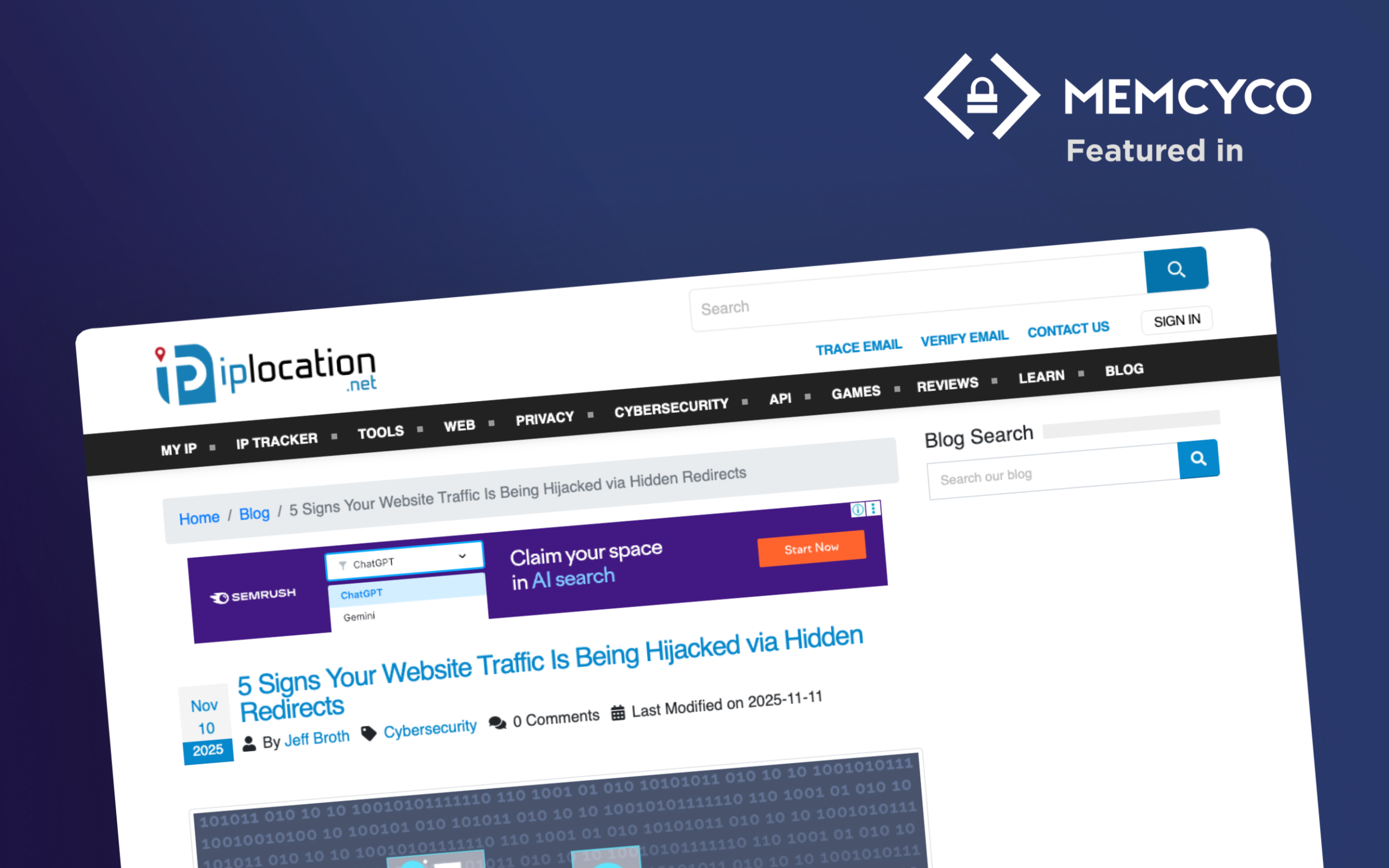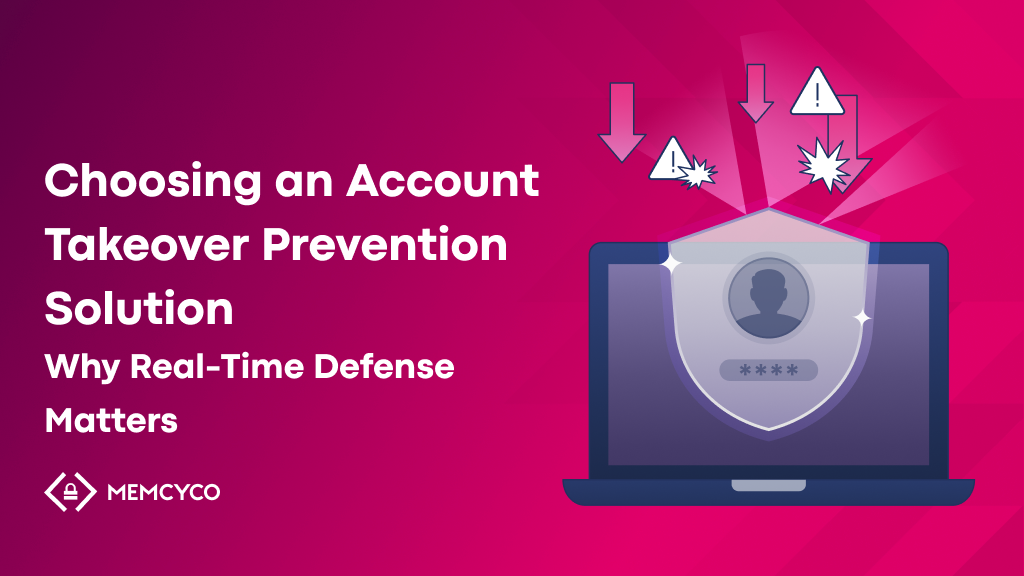The stark challenge to modern phishing site detection is that the efficacy of a detection strategy is now measured in seconds, not hours. In 2024, threat actors stole credentials in a median of 49 seconds from the moment a phishing email was opened, according to Verizons’s Data Breach Investigation Report (DIBR) report. Given this reality, relying on scanning and takedown or traditional threat intelligence feeds – that inherently lag behind real-time user engagement – is no longer a viable defense against even unsophisticated credential theft and account takeover (ATO) scams. Evaluating a modern solution therefore requires focusing on a fresh set of criteria built for the speed of the modern web.
Why Speed Matters More Than Takedown Scope
Many security teams assume that takedown services solve the phishing problem. But by the time a takedown request is processed, credentials may already be harvested. Today’s phishing infrastructure is fast, disposable, and automated – threat actors can spin up and discard hundreds of domains in minutes.
Takedown is still important, but it’s reactive. Without real-time phishing site detection, the damage is already done – credentials are in attacker hands.
Security teams need solutions that can detect phishing activity before takedown and block attacks during the session. That requires browser-level signals, live traffic analysis, and spoofed domain recognition the moment a user encounters a fake site.
Related reading: What Domain Takedown Services Miss
Why This Matters Now
Phishing has become a hyper-efficient, industrialized supply chain, and your customers are the target endpoint. Scam automation powered by AI and Phishing-as-a-Service (PhaaS) has led to a significant year-over-year increase in phishing attacks, enabling attackers to launch convincing impersonation sites at unprecedented scale. Menlo Security recorded a 140% year-over-year increase in browser-based phishing attacks between 2023 and 2024, while Kaspersky reported blocking 26% more phishing attempts worldwide in 2024 compared to the previous year.
The rise of reverse proxy phishing, where attackers replay user credentials in real time, has made even MFA-protected accounts vulnerable.
Read more on: How to Detect and Stop Reverse Proxy Phishing in Real-Time
This isn’t just more phishing – it’s the democratization of cybercrime. Technical skill is no longer a barrier. Phishing campaigns can now be deployed by anyone with a credit card and a Telegram handle. They rent kits, customize templates, and deploy campaigns within hours. The result? An expanded human attack surface where even scam-savvy customers are fooled by:
- Personalized, brand-faithful phishing pages
- Real-time credential harvesting methods that leave no trace
- Professional-grade social engineering that builds false trust fast
Security tools that rely solely on URL scanning, user reports, or post-incident takedown are now dangerously behind.
What Features Actually Prevent Credential Theft?
Evaluating phishing detection solutions based on takedown success rates alone misses the point. The real question is: Can it stop the attack in progress? Look for features that intervene preemptively before stolen credentials are used, while disrupting attacker operations proactively, even when malicious sites aren’t yet luring your customers.
- Decoy Credential Injection
Injects fake credentials when users interact with phishing sites, rendering harvested data useless. - Real-time Phishing Warnings (Red Alerts)
Alerts users immediately when they access a spoofed or impersonation site. - Suspicious Device Blocking
Automatically blocks access from untrusted devices following a phishing attempt. - Lookalike Domain Detection
Identifies sites impersonating brand domains, even when the URL looks convincing. - SEO Poisoning Defense
Stops phishing pages from appearing in search engine results and prevents brand abuse.
These capabilities don’t just detect phishing – they weaponize the moment of attack to turn the tables on the scam itself.
Real-Time Detection vs Traditional Approaches:
A Side-by-Side Look at How Real-Time Defense Dismantles the Scam Lifecycle
| Scenario | Memcyco: Real-Time, Preemptive Protection | Takedown-Only Approach | Threat Intel Feed-Based Approach |
| Reconnaissance activity targeting your brand begins | Early impersonation signals are detected on the legitimate site through behavioral anomalies and infrastructure probing | No visibility during attack setup | No detection until domain is registered and flagged externally |
| Fake phishing site goes live | Impersonation patterns, domain anomalies, and infrastructure traits trigger early detection, even before traffic hits | Unlikely to detect until reported manually or flagged post-compromise | Might detect if domain or kit matches a known feed signature |
| First users land on fake site | On entry, Red Alerts deter users from continuing into impersonating site, decoy credentials replace real credentials entered by users who ignore Red Alert, and targeted users are identified instantly | Credentials are often submitted before takedown begins | No visibility unless activity routes through a known malicious domain |
| Attack spreads across users or regions | Live telemetry shows geographic spread and targeted users in-session, enabling prioritized intervention | Response delays allow broader impact; regional spread may go unnoticed | Detection lags and remains disconnected from real-time user impact |
| Fraud team initiates response | Full traceability of spoofed site structure, device identity, session behavior, and affected victims, enriched into internal systems via API | Minimal forensics; attackers vanish before sufficient intel is gathered | Forensic signals limited to static indicators, often too late |
| Customer protection outcome | Credential theft is neutralized in-session, users warned mid-scam, no reset friction or reputational damage | Credentials compromised, requiring customer outreach, resets, and trust recovery | Account compromise may go unnoticed, often discovered only after fraud occurs |
How to Evaluate a Solution Beyond Takedown Metrics
Don’t just ask how many domains a service takes down. Ask smarter questions that reflect how phishing attacks actually unfold today:
- Can it detect phishing before it reaches users?
Solutions should identify impersonation infrastructure from behavioral signals and traffic patterns, not just domain lookups. Timing matters because detection that happens post-submission isn’t detection, it’s hindsight. - Can it operate in-session to stop active attacks?
Real-time controls are essential when phishing campaigns execute in under an hour. The best tools act during the interaction, not afterward. - Can it render stolen credentials useless through decoy injection?
If fake credentials are submitted instead of real ones, there’s no cleanup, no reset, and no user friction. It’s a silent win that turns the attacker’s success into failure. - Does it provide real-time visibility into which users were targeted?
Knowing who visited a spoofed site – while the scam is still live – lets teams act with precision. Outreach, lockouts, and protective workflows depend on this context. - Can it enrich investigations with attacker, device, and session data?
Beyond alerts, the right solution surfaces actionable data about attacker devices, impersonation methods, and even referrer paths. That’s what empowers cross-team incident response.
If a phishing site is only detected once customers have been scammed, it’s too late. The opportunity to intervene has passed. Fraud and SOC teams are left cleaning up damage that was entirely preventable.
Looking for a breakdown of top vendors? See Top 10 Domain Takedown Services
Want to compare takedown providers? Read How to Choose the Best Domain Takedown Service
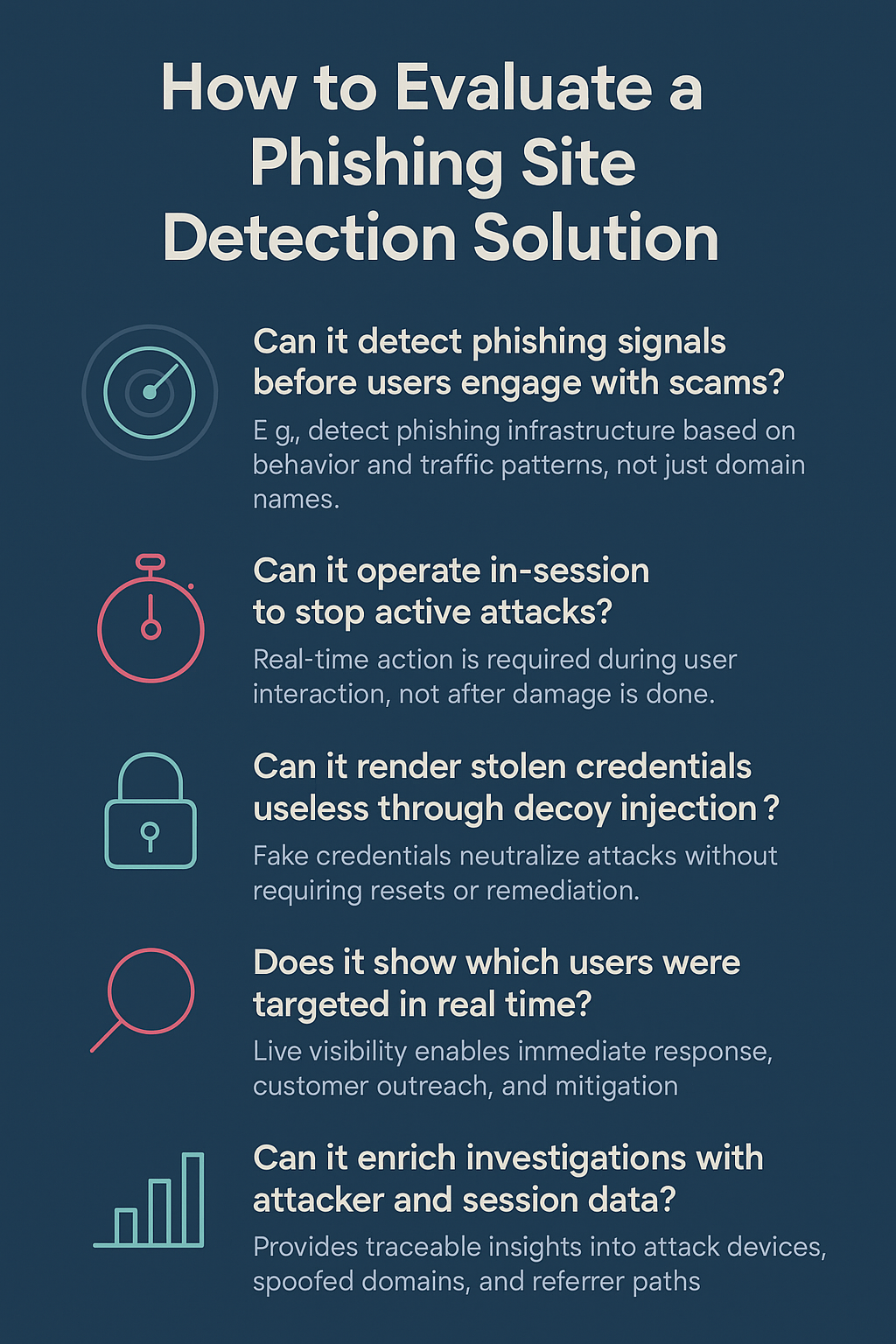
The Memcyco Platform: Preemptive, Proactive Capabilities at a Glance
Unlike traditional tools that rely on intermittent domain scanning, Memcyco detects impersonation reconnaissance and phishing kit usage in real time, triggering in-session defenses before users are exposed and account takeovers spread.
Key capabilities include:
- Detection of phishing and spoofing activity: through live referral monitoring and session-level signals on the legitimate site
- Browser-level detection of credential stuffing: based on in-session login behavior and attacker device profiling
- Decoy Credentials: that replace at-risk credentials entered on fake sites
- [Optional] user Red Alerts: that appear on impersonating sites, warn users to turn back upon entry
- Real-time flagging of suspicious devices: based on attack-related behavior
- SEO poisoning disarm: that downranks impersonating sites attempting to outrank yours
In short, Memcycos’ analyst-endorsed approach gives teams real-time visibility into phishing campaigns in progress, pinpointing targeted users, involved devices, and redirection paths for immediate response.
Analyst Endorsement: Detection Beyond the Feed
Memcyco detects phishing activity even when it originates from obscure or unmonitored domains – using referral patterns, session behavior, and credential misuse signals on the legitimate site to expose reverse proxy phishing and other stealth campaigns in real time. As analyst David Mattei notes in Datos Insights’ Q1 2025 report, this closes a critical visibility gap for financial institutions.
Read the report: Datos Insights Highlights Memcyco in its Q1 2025 Fintech Spotlight Report
FAQs About Phishing Site Detection
To help security teams evaluating phishing detection solutions, here are some of the most common questions:
How does phishing site detection work?
Phishing site detection works by identifying suspicious domains, behaviors, and referral patterns that suggest a fake site is active. The most advanced systems analyze browser-level signals rather than relying solely on external threat feeds.
What’s the difference between phishing detection and takedown?
Detection is identifying the phishing site. Takedown is the legal process of removing it. Detection can happen in real time – takedown often takes hours or days.
What features should phishing site detection include?
Look for decoy credentials, phishing site warnings, suspicious device analysis, lookalike domain recognition, and SEO poisoning defense.
Can phishing site detection prevent credential theft?
Yes, if it operates at the session level. Decoy injection and real-time alerts can neutralize the impact of phishing even as it happens.
How long does takedown usually take?
Takedown timelines vary, but even “fast” services can take hours. Detection and prevention during the session is the only way to stop theft before it starts.
Do phishing detection tools cover SEO scams?
Advanced detection platforms should include SEO poisoning defense to stop scam sites from ranking in search results.
Can phishing detection tools help with brand protection too?
Yes. In addition to credential theft prevention, they can detect impersonation sites, block brand abuse in search results, and provide visibility into scam campaigns targeting your customers.
